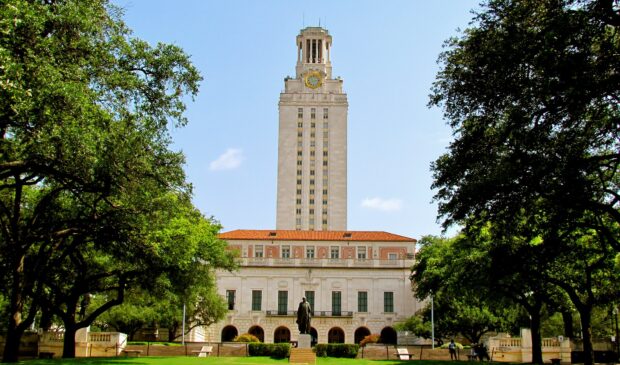Urban Land Institute offers a glimpse at plans for UT’s many real estate holdings in Austin
Monday, July 31, 2023 by
Chad Swiatecki From the development of the life sciences Innovation District to land eyed for possible use by federally funded semiconductor research and manufacturing, the land holdings of the University of Texas continue to play a huge role in the development efforts of Austin, both public and private.
Representatives from the area’s real estate and planning sector recently got a closer look during an Urban Land Institute Austin panel discussion. UT’s leaders have aggressive plans for what the university will look and feel like in the next 10 years, from a 350-acre swath of the Pickle Research Campus in North Austin to the creation of graduate housing in East Austin that will be accessible across the multibillion-dollar Interstate 35 project.
Jim Davis, UT’s senior vice president and chief operating officer, said the public-private partnership deal structure will likely be used to move forward with many future projects involving university land. He pointed to the success of the Moody Center, which was led by the Oak View Group entertainment company, as an example of why those partnerships are attractive.
“If it’s office space, if it’s housing, if it’s an arena, these are things oftentimes that can be developed in ways that are better through a (public-private partnership),” he said. “Sometimes, they’re very specific university-type buildings that just don’t work as well.”
Carrie Rollman, vice president of the Brailsford & Dunlavey consulting firm that works closely with UT on development, said the university also wants to be sensitive to the needs of longtime residents in East Austin as it adds badly needed graduate housing on its land holdings in the Blackland neighborhood.
“The university made some commitments to the neighborhood about what they would do when they built on that site, and those were things that continue to be honored,” she said. “There are things that had an impact on that project where it meant a little bit less beds, a little bit less scale, a little bit less cash flow, but ultimately really worked to have the project transition from neighborhood to more commercial multifamily throughout the development.” Rollman added that the resulting development has a residential feel that “then kind of scales up as you go closer to campus.”
Davis said the need for student housing in West Campus is another priority. Specifically, the university is focused on making accommodations affordable for Pell Grant-eligible students so they’re not forced to live farther away from campus in areas where market-rate apartments cost less. He said the disconnect that occurs for those students – due to living far from other students and university resources – reduces their chances of graduation and future success.
“The objective we have really is, how do we advance the highest number of Pell-eligible students graduating through our university in four years?” he said. Davis added, “Being near campus matters for success, for graduation rates, for joining clubs, joining events and getting a network of friends. If you live far away and you have a second job and you’re commuting all the time, you miss out on something super special about going to a university. And so for us, proximity matters and affordability matters.”
Todd Runkle, managing director of Gensler Architects, said the successful use of UT’s real estate assets will hinge on making new areas as inviting as possible to all visitors. He pointed to the Innovation Tower at the former Brackenridge Hospital site as an example.
“When we looked at the master plan of the innovation district, the medical school, as well as athletics, it really is blending the boundaries, that people want to be there 24/7,” he said. “It’s kind of that idea of the 20-minute city that this entire district will kind of blend together from the university campus athletics, the medical school and downtown Austin … that edge of downtown is going to be transformed.”
Photo made available through a Creative Commons license.
The Austin Monitor’s work is made possible by donations from the community. Though our reporting covers donors from time to time, we are careful to keep business and editorial efforts separate while maintaining transparency. A complete list of donors is available here, and our code of ethics is explained here.
You're a community leader
And we’re honored you look to us for serious, in-depth news. You know a strong community needs local and dedicated watchdog reporting. We’re here for you and that won’t change. Now will you take the powerful next step and support our nonprofit news organization?






